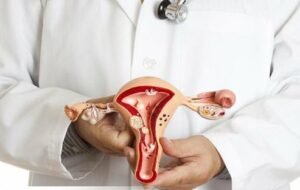Welcome to a crucial conversation that often remains in the shadows – a discussion about vaginal atrophy, a condition that can affect women at various stages of life. While it’s a topic that may be uncomfortable to address, it’s essential to shed light on the symptoms, causes, and, most importantly, effective solutions to bring relief and restore comfort. In this blog, we’ll explore the cure for vaginal atrophy, debunk common myths, and provide actionable insights to empower women on their journey to renewed well-being.
Contents
What Is Vaginal Atrophy?
 Vaginal atrophy, also known as atrophic vaginitis, is a common condition that primarily affects postmenopausal women but can also occur in women during other life stages. It is characterized by the thinning, drying, and inflammation of the vaginal walls due to a decline in estrogen levels. Estrogen plays a crucial role in maintaining the health and elasticity of the vaginal tissues. And when its levels decrease, as is typical during menopause, childbirth, or certain medical treatments, the vaginal tissues can undergo changes that lead to discomfort and various symptoms.
Vaginal atrophy, also known as atrophic vaginitis, is a common condition that primarily affects postmenopausal women but can also occur in women during other life stages. It is characterized by the thinning, drying, and inflammation of the vaginal walls due to a decline in estrogen levels. Estrogen plays a crucial role in maintaining the health and elasticity of the vaginal tissues. And when its levels decrease, as is typical during menopause, childbirth, or certain medical treatments, the vaginal tissues can undergo changes that lead to discomfort and various symptoms.
The symptoms of vaginal atrophy include vaginal dryness, itching, burning sensations, pain during intercourse, and an increased vulnerability to urinary tract infections. Beyond the physical discomfort, vaginal atrophy can impact a woman’s overall quality of life and intimate relationships. While it is a natural part of the aging process, there are various medical and lifestyle interventions available to alleviate symptoms and promote vaginal health. Ultimately, allowing women to lead fulfilling and comfortable lives.
When To Seek Cure For Vaginal Atrophy?
Recognizing the signs and symptoms of vaginal atrophy is crucial for seeking timely intervention and improving overall well-being. Women should consider seeking a cure for vaginal atrophy when experiencing the following indicators:
- Vaginal Dryness: Persistent dryness and a lack of moisture in the vaginal area can be an early sign of atrophy. This may lead to discomfort, irritation, and an increased risk of inflammation.
- Pain or Discomfort During Intercourse: If sexual intercourse becomes painful or uncomfortable due to sensations such as burning or a feeling of tightness, it may be indicative of changes in vaginal health.
- Itching and Irritation: Persistent itching or irritation in the vaginal region could signal the thinning of vaginal tissues, a common symptom of atrophy.
- Urinary Symptoms: Women with vaginal atrophy may experience urinary symptoms such as increased frequency, urgency, or a higher susceptibility to urinary tract infections due to changes in the urethra and surrounding tissues.
- Bleeding After Intercourse: Vaginal atrophy may lead to fragile tissues that are more prone to small tears. And resulting in post-coital bleeding.
- Changes in Vaginal Appearance: Noticeable changes in the appearance of the vaginal tissues. As thinning or a loss of elasticity, may be signs of atrophy.
- Emotional Impact: Reduced libido, anxiety, or avoidance of sexual activity due to discomfort can have emotional implications, and seeking help is crucial for addressing both the physical and emotional aspects of vaginal atrophy.
Women experiencing one or more of these symptoms should consult with a healthcare professional. A healthcare provider can assess the individual’s symptoms, discuss potential causes, and recommend appropriate treatments. Early intervention can significantly improve symptoms and enhance overall quality of life.
What Are Some Strategies To Cure Vaginal Atrophy?
 Addressing vaginal atrophy involves a combination of medical interventions, lifestyle adjustments, and self-care practices. Here are some strategies to consider:
Addressing vaginal atrophy involves a combination of medical interventions, lifestyle adjustments, and self-care practices. Here are some strategies to consider:
Hormone Therapy (HT)
Hormone therapy remains one of the primary medical interventions for treating vaginal atrophy. Estrogen, available in various forms such as creams, tablets, or vaginal rings, is administered to replenish the declining estrogen levels in the vaginal tissues. By directly targeting the affected area, these treatments help restore the natural balance of hormones, alleviating symptoms like vaginal dryness and discomfort.
Topical Moisturizers and Lubricants
Over-the-counter or prescribed vaginal moisturizers and lubricants offer practical solutions for managing symptoms of dryness and discomfort. These products help maintain and enhance vaginal moisture, providing relief during daily activities and sexual intercourse. Regular use, regardless of sexual activity, is encouraged to sustain optimal vaginal health. Choosing products that are free from irritants and fragrance, and consulting with a healthcare professional to ensure compatibility, is essential for an effective and safe experience.
Pelvic Floor Exercises
Pelvic floor exercises, commonly known as Kegel exercises, focus on strengthening the muscles supporting the pelvic organs, including the vaginal muscles. These exercises can improve blood circulation to the pelvic region, enhance muscle tone, and contribute to the overall health and elasticity of vaginal tissues. Women can incorporate pelvic floor exercises into their daily routine, and guidance from a healthcare provider or a pelvic health physiotherapist may be beneficial to ensure proper technique and effectiveness.
Healthy Lifestyle Choices
Adopting a healthy lifestyle can positively impact overall well-being and contribute to vaginal health. A well-balanced diet rich in nutrients supports the body’s natural functions, including the maintenance of mucous membranes. Staying hydrated is crucial for general health and helps prevent dehydration of the vaginal tissues. Avoiding harsh soaps, douches, and other potential irritants in the genital area is also recommended. By making these lifestyle adjustments, women can create an environment that promotes optimal vaginal function and reduces the risk of exacerbating symptoms associated with vaginal atrophy.
Herbal Supplements
While not universally supported by scientific evidence, some women explore the use of herbal supplements such as black cohosh or red clover to alleviate symptoms of vaginal atrophy. These supplements are believed by some to have estrogen-like effects that may contribute to improved vaginal health. However, individuals must exercise caution and consult with a healthcare professional before incorporating herbal supplements into their routine. Because the safety and effectiveness of these products can vary.
Adequate Hydration
Proper hydration is essential for maintaining the health of mucous membranes throughout the body, including those in the vaginal area. Drinking an adequate amount of water supports overall well-being and can contribute to the preservation of vaginal moisture. While hydration alone may not be a cure for vaginal atrophy, it plays a role in promoting optimal bodily functions and may complement other strategies for managing symptoms.
Regular Sexual Activity
Engaging in regular sexual activity, if comfortable, can have potential benefits for women experiencing vaginal atrophy. Sexual activity stimulates blood flow to the pelvic region, promoting natural lubrication and contributing to the maintenance of tissue elasticity. Open communication with a partner is crucial to ensuring a supportive and understanding environment. It’s important to note that this recommendation may not be suitable for everyone. And individuals should prioritize their comfort and well-being when considering this aspect of treatment.
Medical Procedures
In cases where conservative measures prove insufficient, medical procedures may be considered to address vaginal atrophy. Laser therapy and regenerative treatments are among the options available. These procedures aim to stimulate collagen production in the vaginal tissues, improving their health and elasticity. Individuals need to discuss the potential risks, benefits, and expected outcomes with their healthcare provider to make informed decisions about whether such interventions are appropriate for their specific situation.
Emotional Well-Being
Managing stress and addressing the emotional impact of vaginal atrophy is a crucial aspect of holistic treatment. Stress can exacerbate physical symptoms. So incorporating stress-reduction techniques such as mindfulness, meditation, or counseling may be beneficial. Seeking support from healthcare professionals, joining support groups, or engaging in open communication with partners can provide emotional support and enhance the overall well-being of individuals coping with vaginal atrophy.
It’s crucial to note that individual responses to treatment can vary. Hence, consulting with a healthcare provider is essential to determine the most appropriate and effective strategies for each person’s unique situation.
What Are Some Myths And Misconceptions About It?
 Here are some myths regarding the cure for vaginal atrophy:
Here are some myths regarding the cure for vaginal atrophy:
Myth 1: Vaginal Atrophy Only Affects Older Women
Fact: While vaginal atrophy is more common in postmenopausal women due to a decline in estrogen levels, it can affect women at various life stages. Factors such as breastfeeding, certain cancer treatments, and hormonal fluctuations related to childbirth can also contribute to this.
Myth 2: This Is Just a Normal Part of Aging
Fact: While it is true that hormonal changes during menopause contribute to vaginal atrophy, considering it a “normal” or inevitable part of aging can discourage women from seeking treatment.
Myth 3: You Can’t Prevent Vaginal Atrophy
Fact: While some factors leading to vaginal atrophy, such as menopause, are unavoidable, certain lifestyle choices can help maintain vaginal health. Regular sexual activity, a well-balanced diet, and staying hydrated contribute to overall well-being and may reduce the risk or severity of vaginal atrophy.
Myth 4: Only Women Who Are Sexually Active Experience Vaginal Atrophy
Fact: While sexual activity can influence vaginal health, women who are not sexually active can still experience vaginal atrophy. Factors such as hormonal changes, medications, and certain health conditions contribute to the development of atrophy, and symptoms may manifest independently of sexual activity.
Myth 5: Vaginal Atrophy Is Purely a Physical Issue
Fact: Vaginal atrophy can have emotional and psychological impacts as well. Discomfort during intercourse, changes in sexual function, and the impact on intimate relationships can contribute to stress and anxiety.
Myth 6: Hormone Therapy Is the Only Treatment Option
Fact: While hormone therapy is a common and effective treatment, it is not the only option. Topical moisturizers, lubricants, lifestyle changes, and non-hormonal medical procedures are also viable interventions.
Dispelling these myths is crucial for promoting awareness and encouraging women to seek appropriate care for vaginal atrophy. Understanding that it can affect women at different life stages and that effective treatments are available helps empower individuals to address this condition proactively.
Conclusion
In conclusion, a cure for vaginal atrophy involves a holistic approach to women’s health, breaking through myths and misconceptions to provide practical solutions. From understanding the signs and symptoms to exploring a range of treatments such as hormone therapy, topical solutions, and lifestyle changes, this comprehensive guide aims to empower women to take charge of their well-being.
By fostering open communication, promoting emotional well-being, and dispelling common misconceptions, we hope to encourage women to seek timely help. Ultimately leading to a more comfortable and fulfilling life. Remember, you are not alone. Hence, there are diverse strategies available to support you on your journey to overcoming vaginal atrophy.
If you are facing menopause related issues, menopause treatment at HerMantra can help. Book your free trial online menopause treatment session now.


